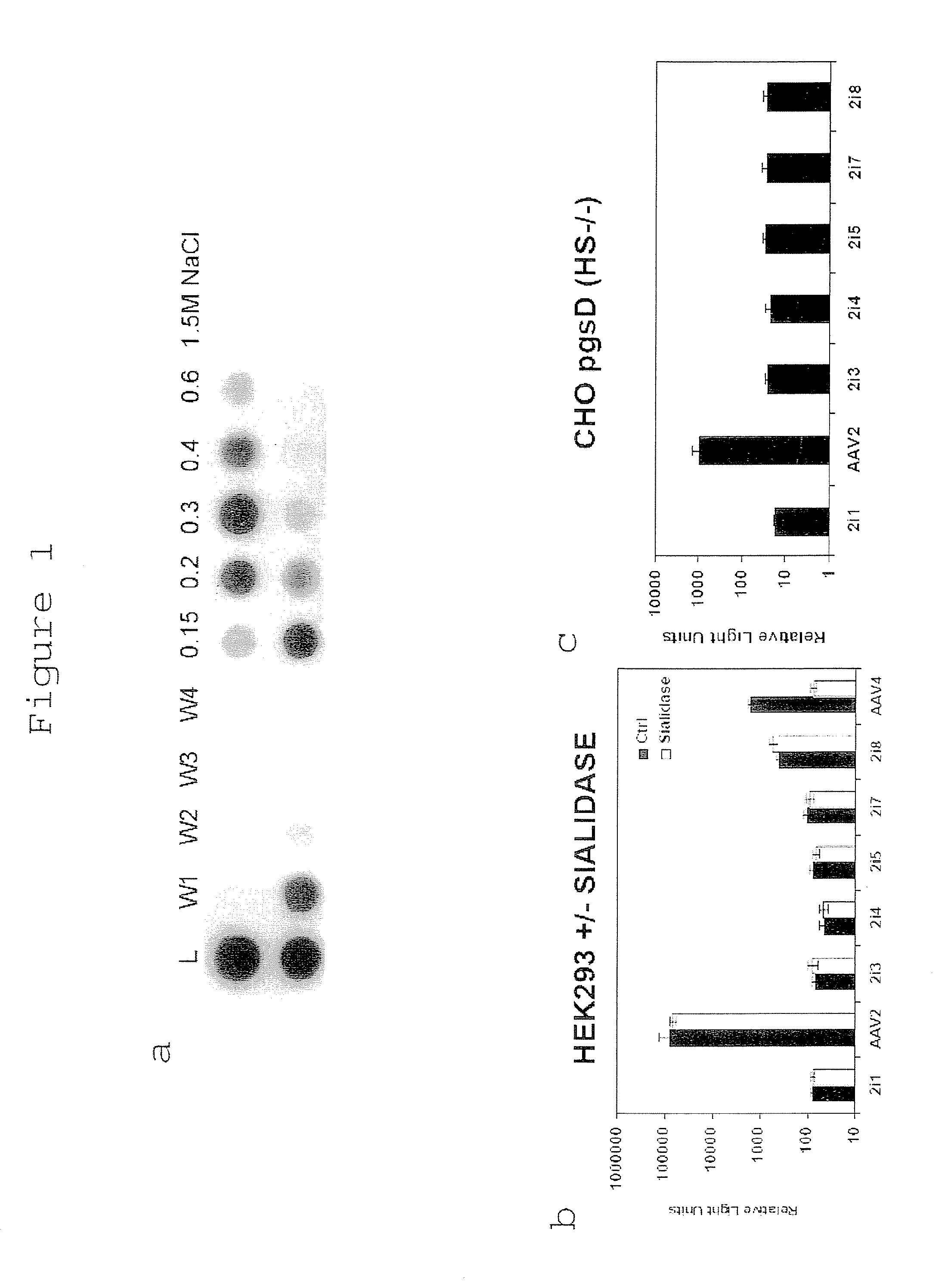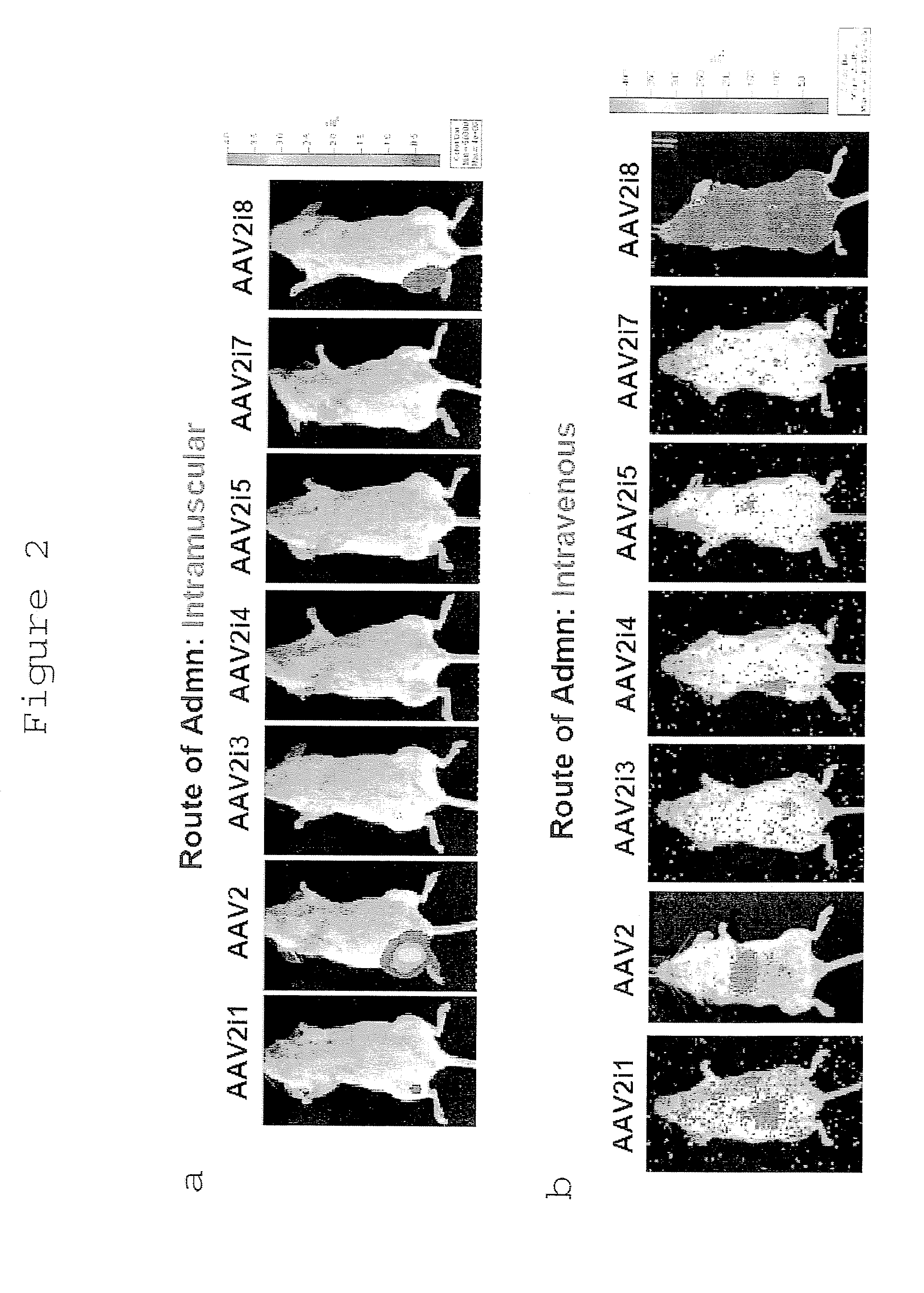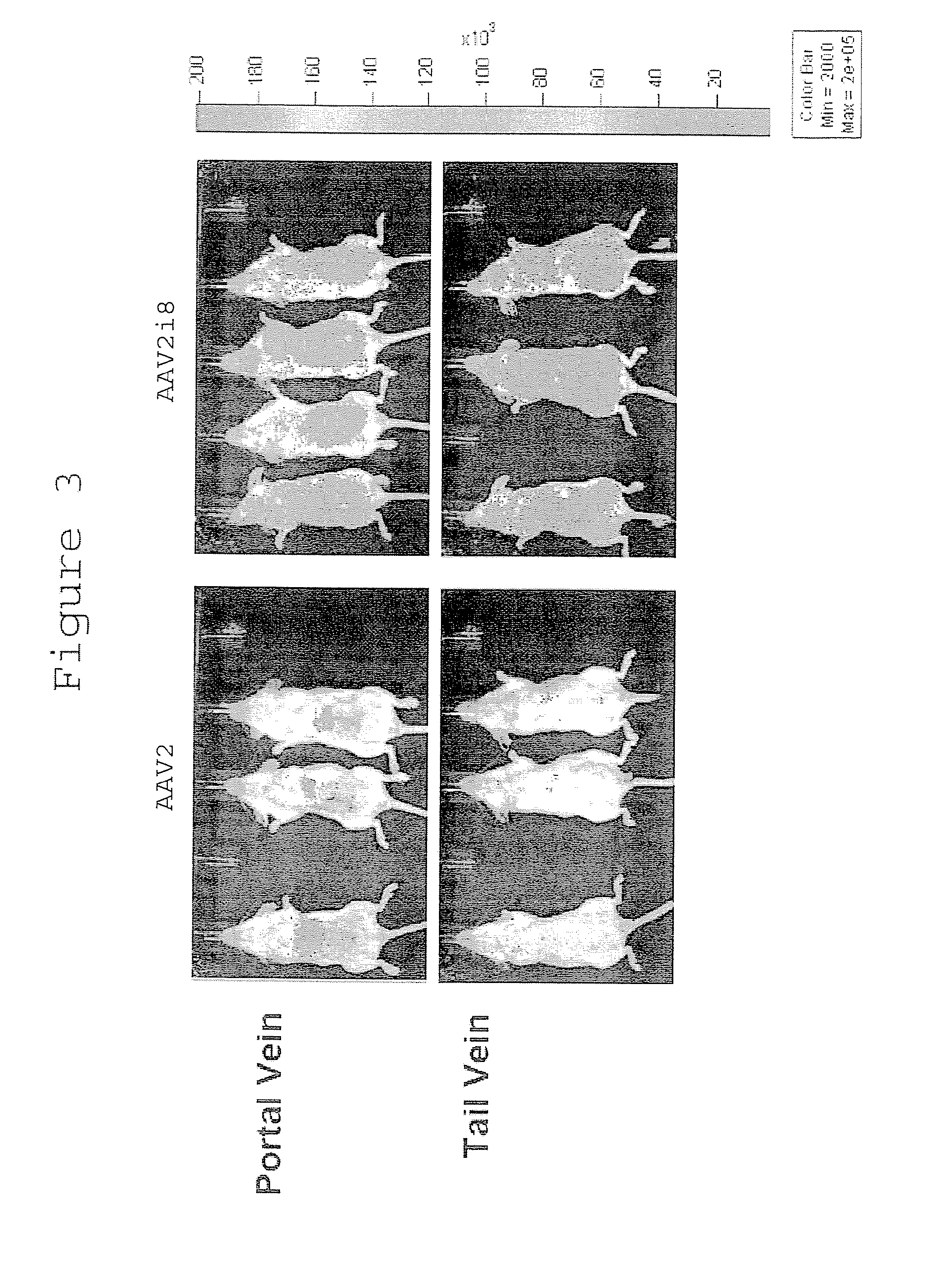Modified virus vectors and methods of making and using the same
a technology of capsid proteins and vectors, applied in the field of modified capsid proteins, can solve problems such as not precluding sequestration
- Summary
- Abstract
- Description
- Claims
- Application Information
AI Technical Summary
Benefits of technology
Problems solved by technology
Method used
Image
Examples
example 1
Generation of AAV2 Inner Loop Mutants (AAV2i Series)
[0393]The heparin binding motif, 585-RGNRQA-590 (SEQ ID NO:3), is located within loop IV at the three-fold axis of symmetry on the AAV2 capsid surface. Through site-directed mutagenesis, the hexapeptide motif was substituted with corresponding amino acids (located adjacent to a conserved glutamine residue) from different AAV serotypes and non-human primate isolates to generate a series of AAV2i mutants (see Table 5). Titers of all AAV2i mutants were comparable to that of parental AAV2 vectors.
example 2
AAV2i Mutants are Deficient in Heparin Binding and Transduction In Vitro
[0394]In the current study, AAV2i mutants containing amino acid residues Q, A, S or N in position 585 and T, N, A or G in position 588 were unable to bind heparin as demonstrated by affinity column binding assays. Representative elution profiles of parental AAV2 capsids and one such mutant, AAV2i8, are shown in FIG. 1a. While the AAV2 peak fraction elutes at ˜300 mM NaCl, the AAV2i8 capsid is unable to bind heparin under physiological conditions (pH 7.4, 150 mM NaCl).
[0395]In general, AAV2i mutants were deficient by several orders of magnitude at transducing HEK293 cells in comparison with the parental AAV2 vector. Several representative examples are shown in FIG. 1b. This observation can be attributed to the inability of AAV2i mutants to bind cell surface heparin sulfate proteoglycans. Based on the rationale that certain AAV serotypes (1, 4, 5 and 6) utilize N- or O-linked sialic acid as a primary receptor, we ...
example 3
AAV2i8 Displays a Distinct Phenotype In Vivo
[0396]Despite the low levels of transduction observed in vitro, we determined the tissue tropism profiles of AAV2i mutants in normal Balb / C mice using live animal bioluminescence imaging. AAV2i mutants 1, 3, 4, 5, 7, 8 and parental AAV2 vectors packaging the firefly luciferase transgene driven by the cytomegalovirus (CMV) promoter were injected at a dose of 1×1010 vector genomes per mouse, through intramuscular route into the right hind limb or through intravenous route through the tail vein.
[0397]In general, most AAV2i mutants appeared to exhibit low-level transduction based on bioluminescent images obtained 1 week post-administration (FIGS. 2a and 2b). One notable exception was AAV2i8.
[0398]Unlike AAV2, which displays preferential tropism for the murine liver, AAV2i8 demonstrates a systemic transduction profile. AAV2i8 transduces murine hind limb skeletal muscle with moderate efficiency following intramuscular administration (FIG. 2a). F...
PUM
| Property | Measurement | Unit |
|---|---|---|
| pH | aaaaa | aaaaa |
| nucleic acid | aaaaa | aaaaa |
| affinity | aaaaa | aaaaa |
Abstract
Description
Claims
Application Information
 Login to View More
Login to View More - R&D
- Intellectual Property
- Life Sciences
- Materials
- Tech Scout
- Unparalleled Data Quality
- Higher Quality Content
- 60% Fewer Hallucinations
Browse by: Latest US Patents, China's latest patents, Technical Efficacy Thesaurus, Application Domain, Technology Topic, Popular Technical Reports.
© 2025 PatSnap. All rights reserved.Legal|Privacy policy|Modern Slavery Act Transparency Statement|Sitemap|About US| Contact US: help@patsnap.com



